
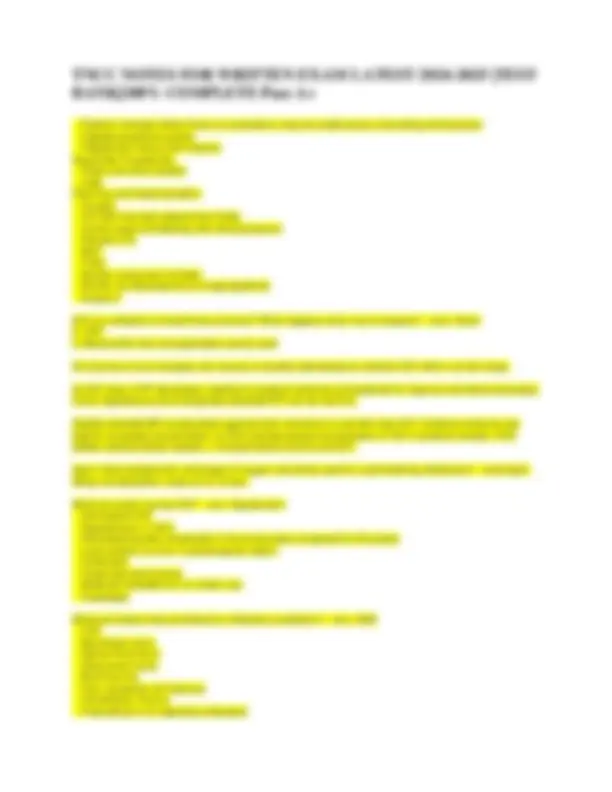
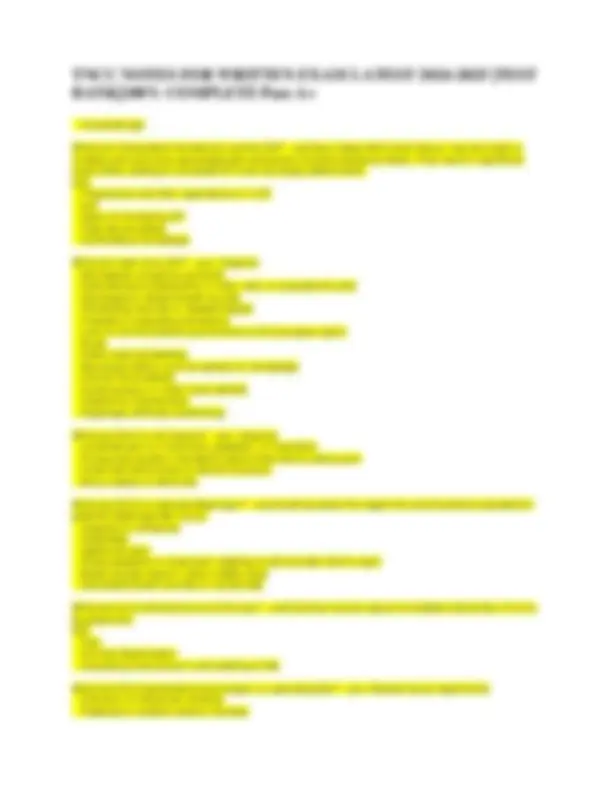
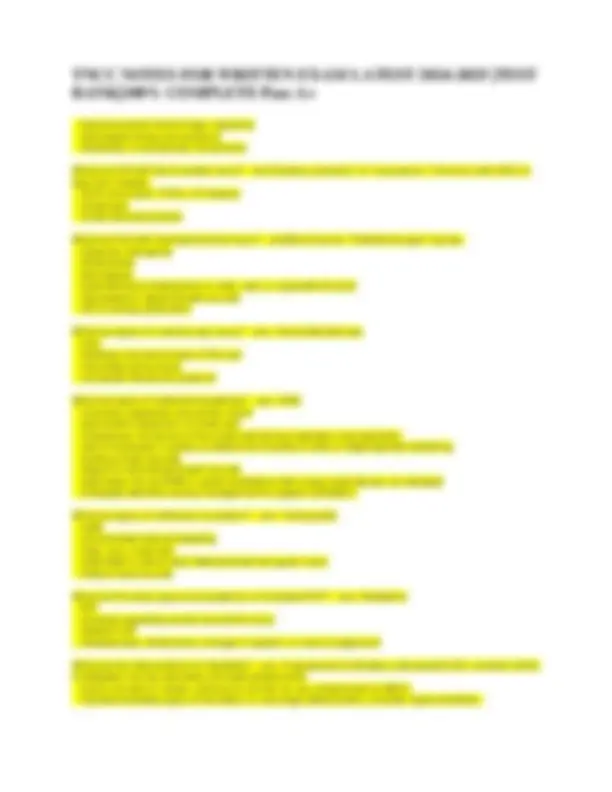
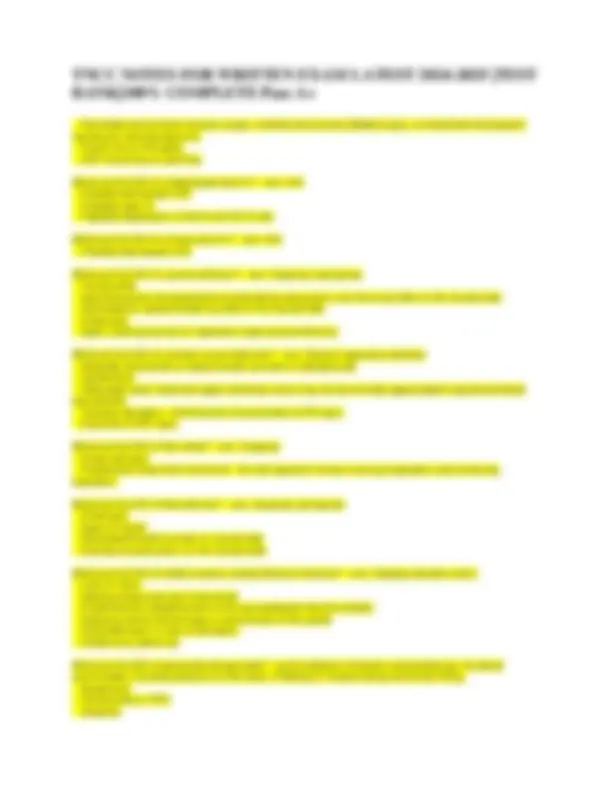
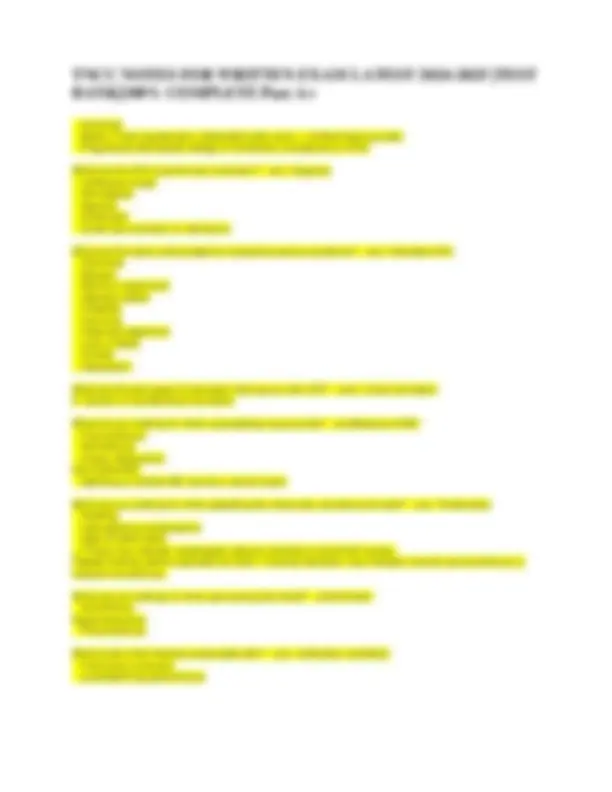
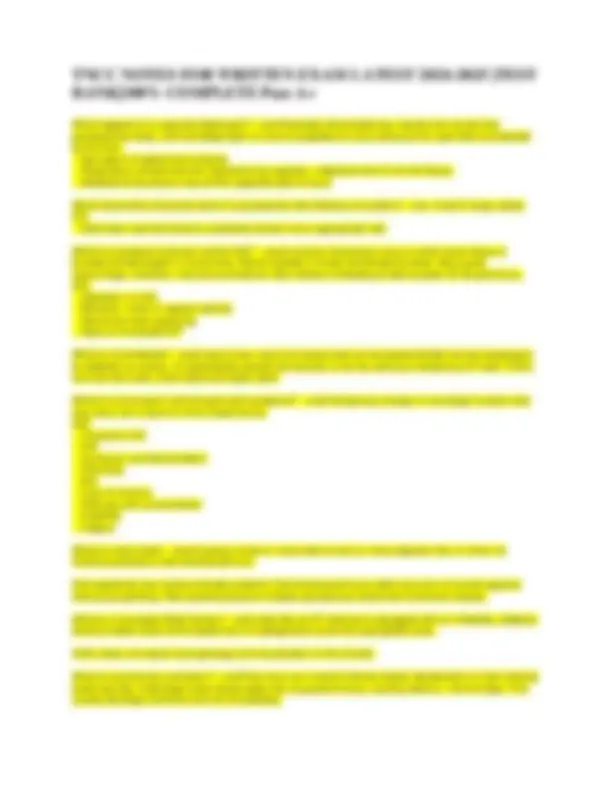
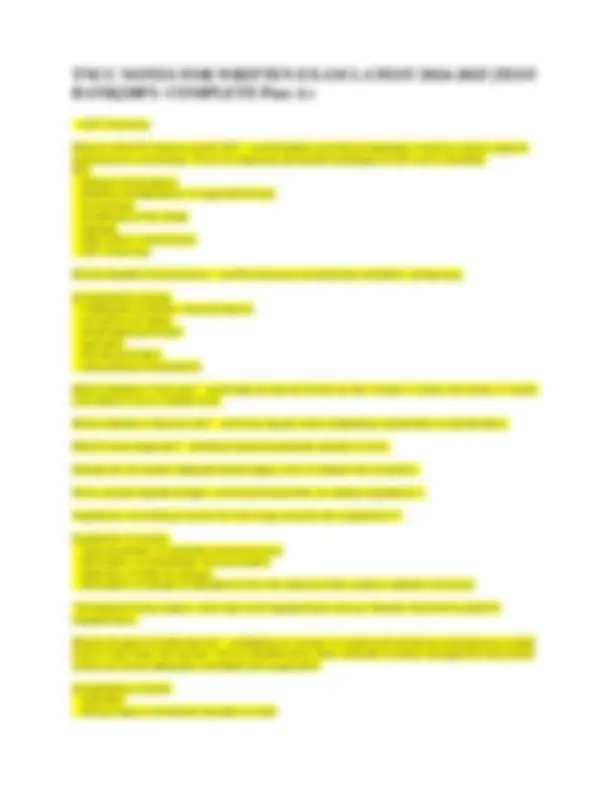
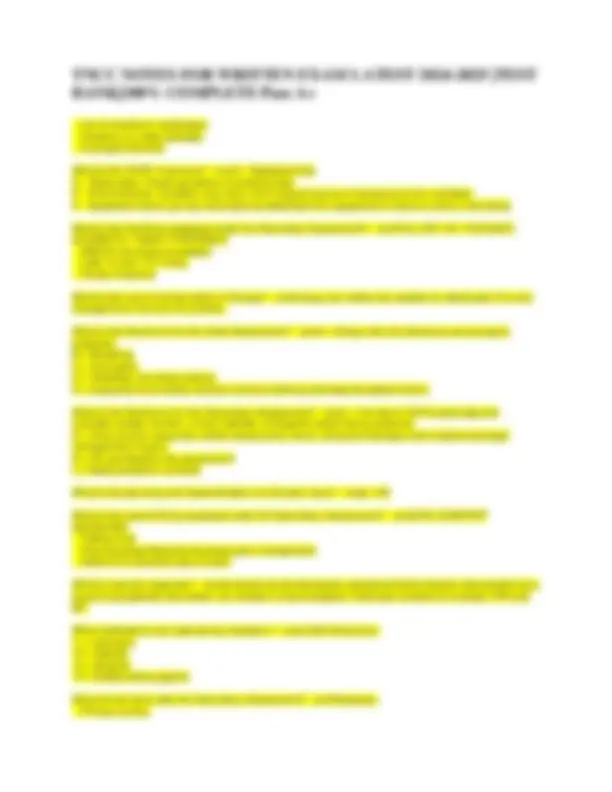
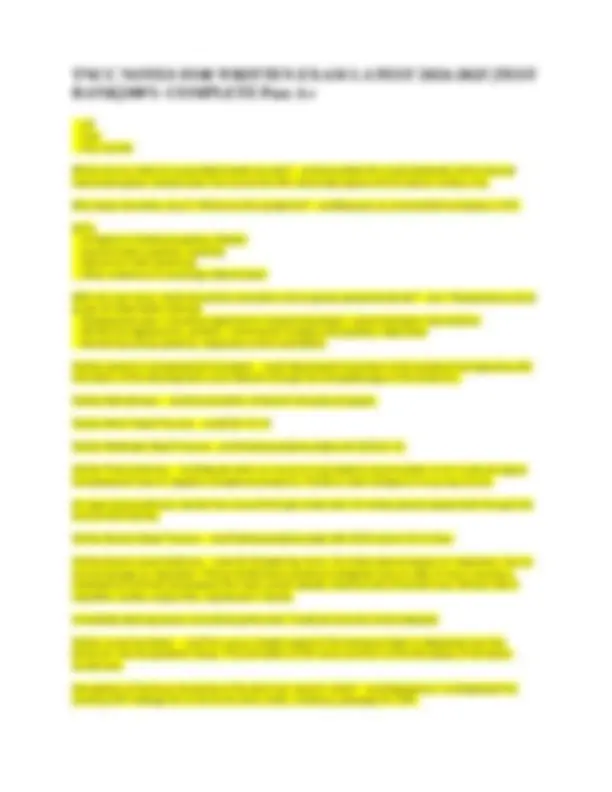
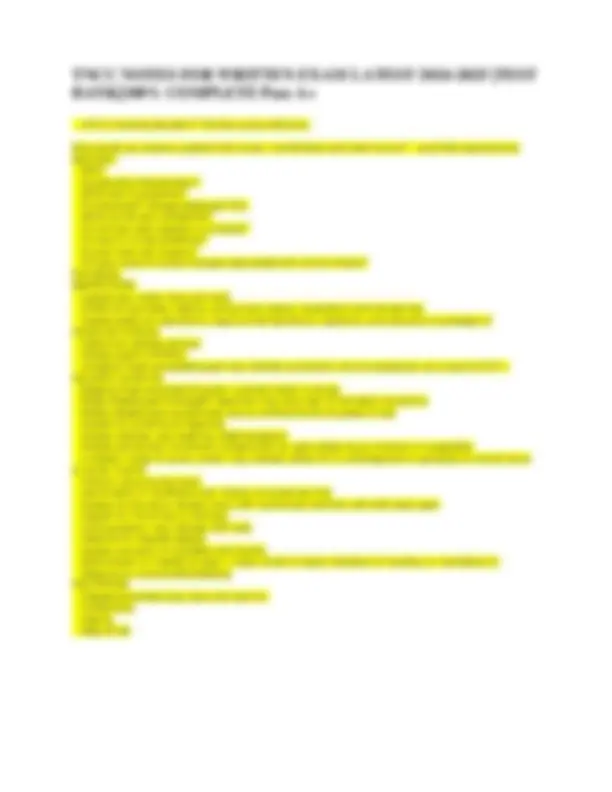


Study with the several resources on Docsity

Earn points by helping other students or get them with a premium plan


Prepare for your exams
Study with the several resources on Docsity

Earn points to download
Earn points by helping other students or get them with a premium plan
Community
Ask the community for help and clear up your study doubts
Discover the best universities in your country according to Docsity users
Free resources
Download our free guides on studying techniques, anxiety management strategies, and thesis advice from Docsity tutors
Tncc (trauma nurse core course) notes for the written exam, covering key aspects of trauma patient assessment and management. It includes initial assessment techniques for cranial and thoracic injuries, hypovolemic shock, and specific injury signs and symptoms. The notes detail inspection, palpation, auscultation, and diagnostic procedures, along with interventions for various conditions such as increased intracranial pressure (icp) and ineffective ventilation. This resource is designed to aid trauma nurses in preparing for certification and enhancing their clinical practice, focusing on rapid and effective trauma care strategies. It emphasizes the importance of recognizing critical signs and symptoms to guide appropriate interventions and improve patient outcomes in trauma settings. The document serves as a concise review of essential trauma nursing concepts, useful for both exam preparation and quick reference in clinical practice.
Typology: Exams
1 / 18

This page cannot be seen from the preview
Don't miss anything!











How would you assess a pt with a cranial injury? - ans(Initial assessment) INSPECTION:
What happens to a ruptured diaphragm? - ansPotentially life-threatening, results from forces that penetrate the body. Left hemidiaphragm is more susceptible to injury because the right side is protected by the liver.
What is a subdural hematoma and its S/S? - ansA focal brain injury beneath the dura mater that results from acceleration/deceleration. Usually venous, and not necessarily from a fx. Formation may be acute or chronic. Acute pt's hematoma manifest 48 hrs post injury S/S:
CSF leaks through the nose (rhinorrhea) or the ears (otorrhea). A potential entrance for invading bacteria. Also: meningitis or encephalitis or brain abscess Explain adrenal gland response. - ansWhen adrenal glands are stimulated by SNS, release of catecholamines (epinephrine and norepinephrine) from adrenal medulla will increase. Epi stimulates receptors in heart to increase force of cardiac contraction (positive inotropy) and increase HR (positive chronotropy) to improve cardiac output, BP and tissue perfusion. Shock stimulates hypothalamus to release corticotropin-releasing hormone that stimulates pituitary to release ACTH that stimulates adrenal gland to release cortisol. Effect of cortisol release is elevation in blood sugar and increased insulin resistance and gluconeogenesis, hepatic process to produce more sugar. Cortisol also causes renal retention of water and sodium, a compensatory mechanism to conserve body water. Explain Cardiogenic Shock. - ansSyndrome that results from ineffective perfusion caused by ineffective perfusion caused by inadequate contractility of cardiac muscle. Some causes:
Explain Irreversible Shock. - ansShock uncompensated or irreversible stages will cause compromises to most body systems.